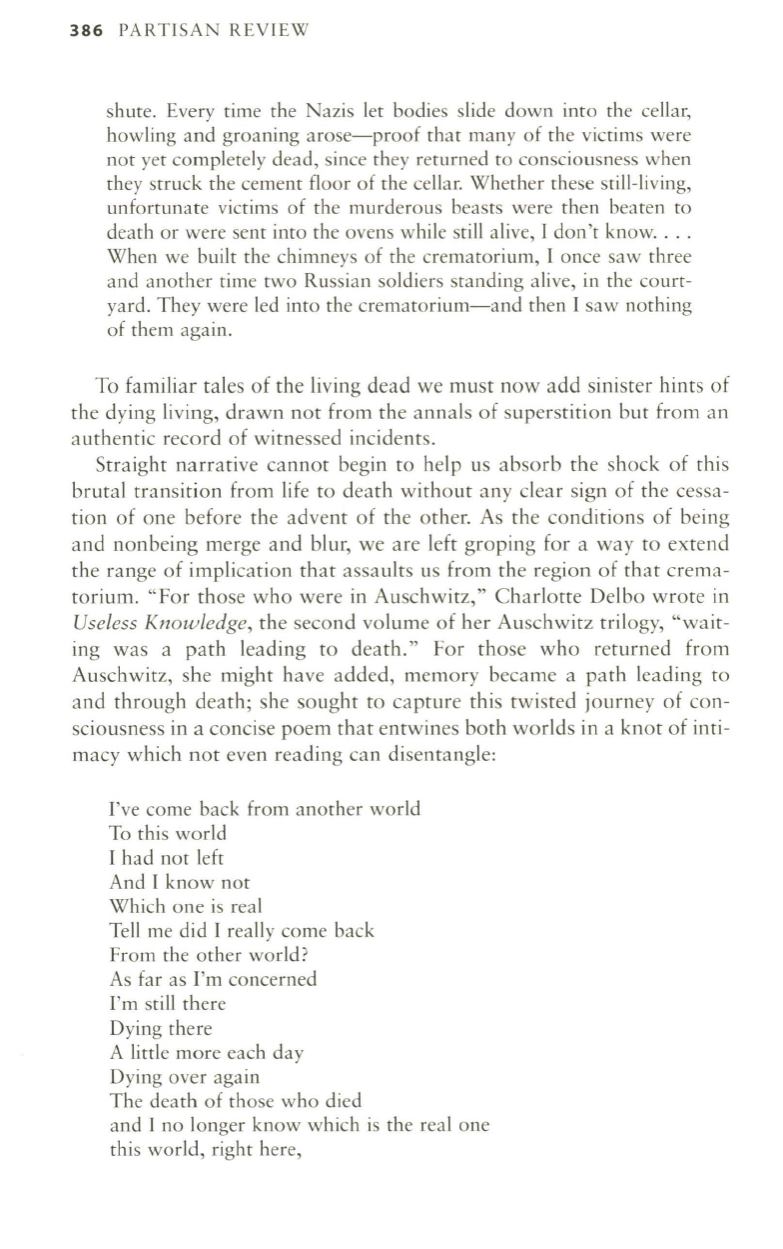
386
PARTISAN REVIEW
shute. Every time the Nazis let bodies slide down into the cellar,
howling and groaning arose-proof that many of the victims were
not yet completely dead, since they returned to consciousness when
they struck the cement floor of the cellar. Whether these still-living,
unfortunate victims of the murderous beasts were then beaten to
death or were sent into the ovens while still alive, I don't know....
When we built the chimneys of the crematorium, I once saw three
and another time two Russian soldiers standing alive, in the court–
yard. They were led into the crematorium-and then I saw nothing
of them again.
To familiar tales of the living dead we must now add sinister hints of
the dying living, drawn not from the annals of superstition but from an
authentic record of witnessed incidents.
Straight narrative cannot begin to help us absorb the shock of this
brutal transition from life to death without any clear sign of the cessa–
tion of one before the advent of the other. As the conditions of being
and non being merge and blur, we are left groping for a way to extend
the range of implication that assaults us from the region of that crema–
torium. "For those who were in Auschwitz," Charlotte Delbo wrote in
Useless Knowledge,
the second volume of her Auschwitz trilogy, "wait–
ing was a path leading to death." For those who returned from
Auschwitz, she might have added, memory became a path leading to
and through death; she sought to capture this twisted journey of con–
sciousness in a concise poem that entwines both wor lds in a knot of inti–
macy which not even reading can disentangle:
I've come back from another world
To this world
I had not left
And I know not
Which one is real
Tell me did I really come back
From the other world?
As far as I'm concerned
I'm still there
Dying there
A little more each day
Dying over again
The death of those who died
and I no longer know which is the real one
this world, right here,


